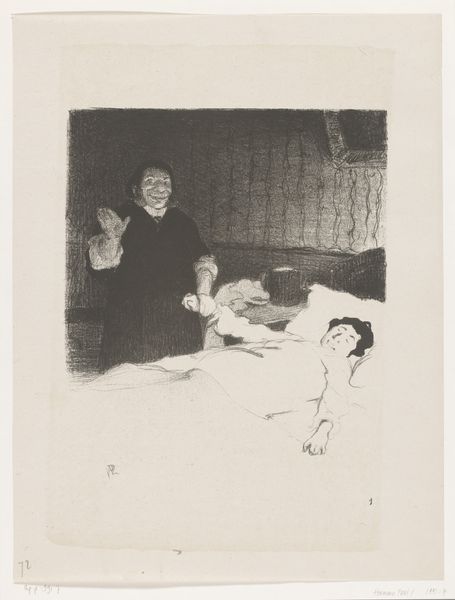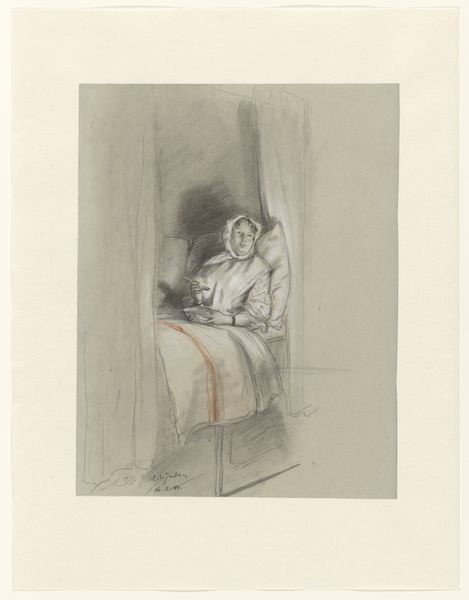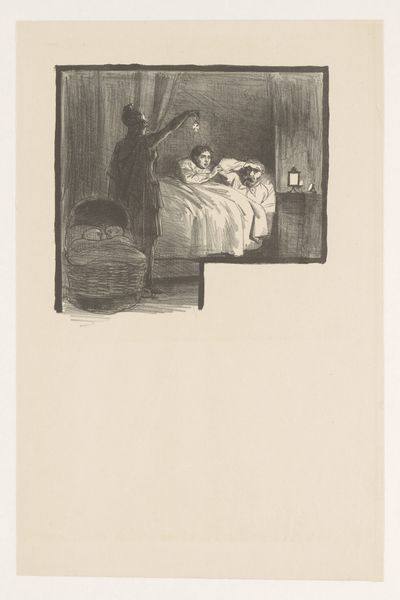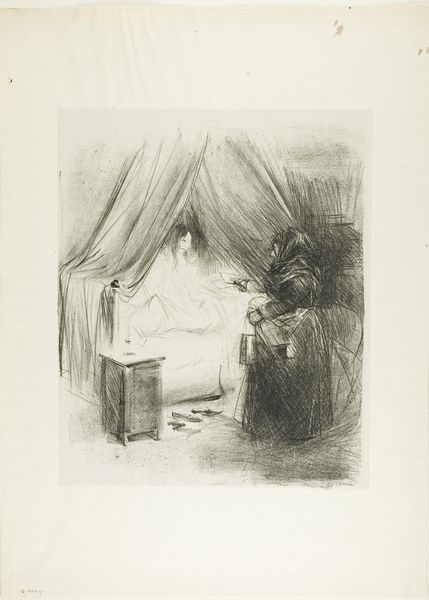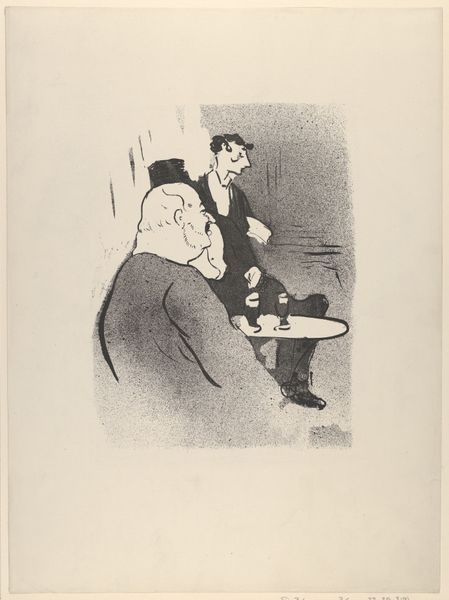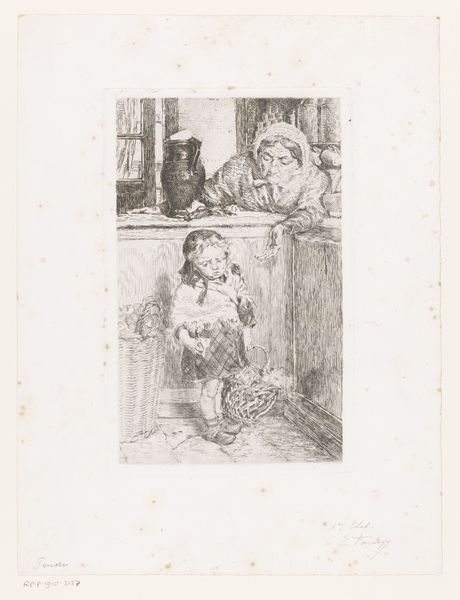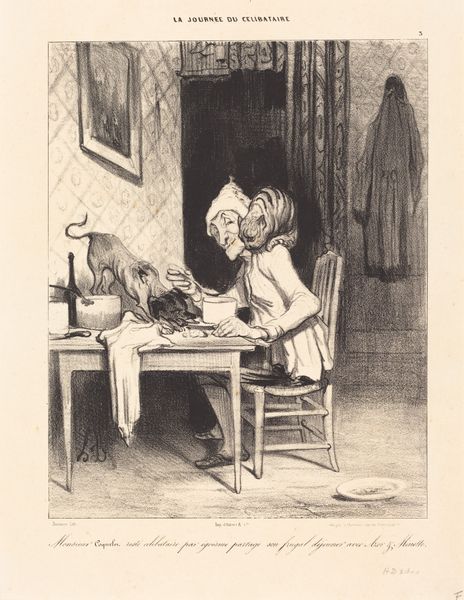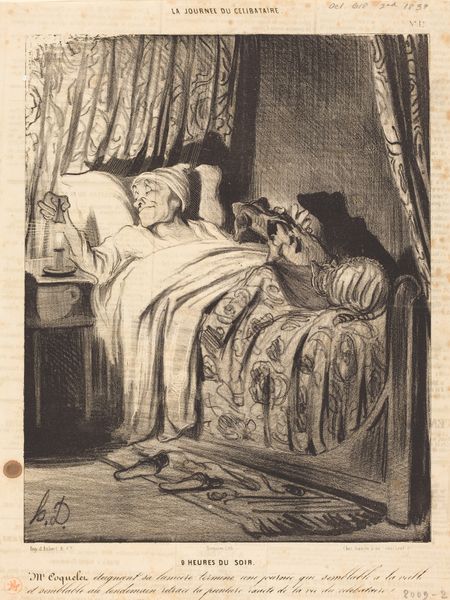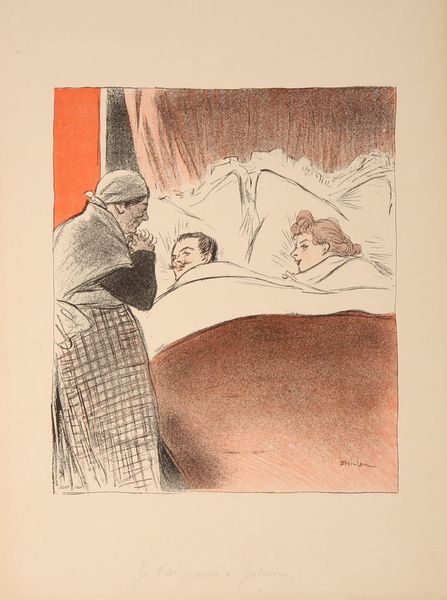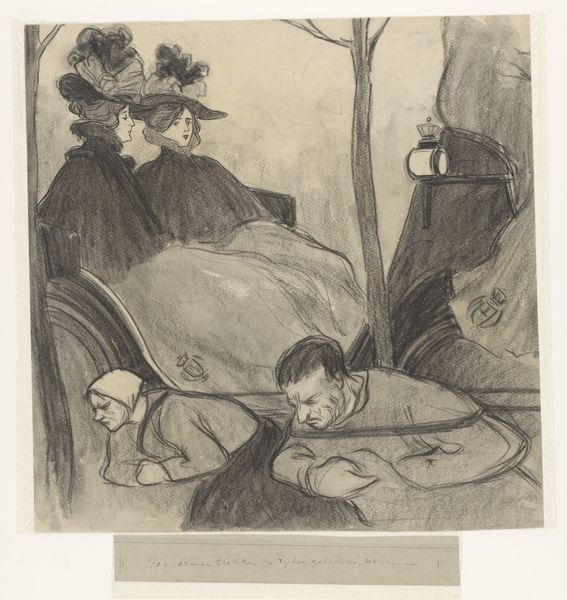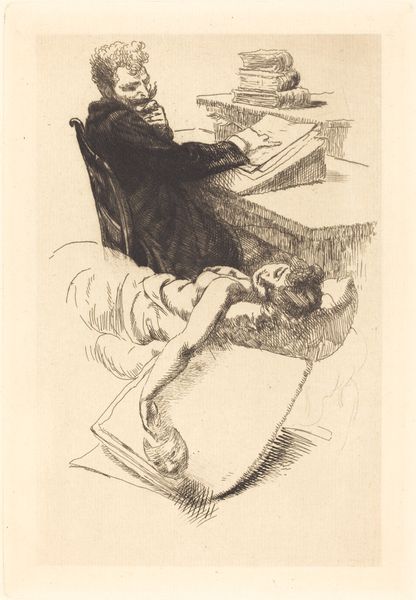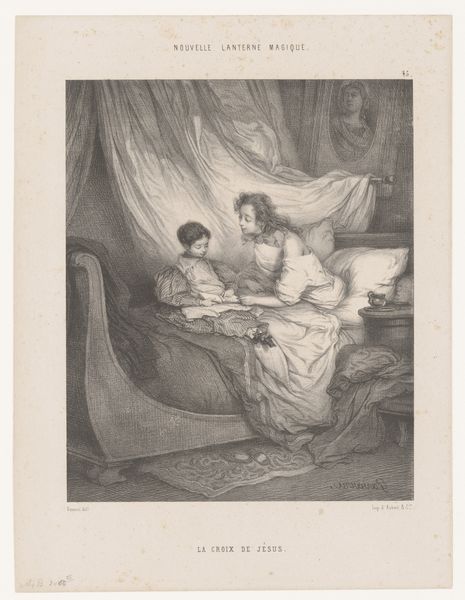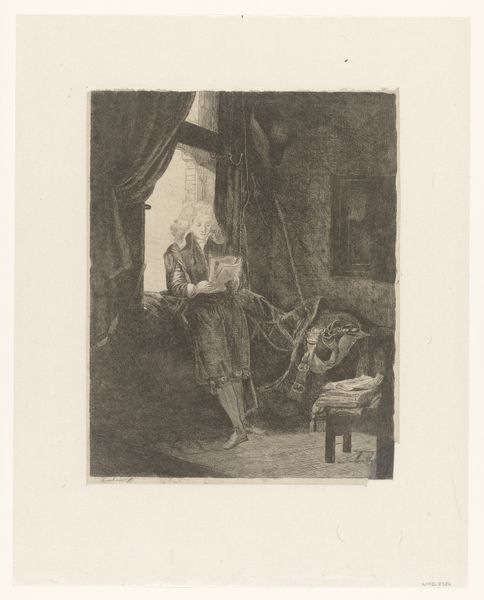
drawing, ink, pen
#
portrait
#
drawing
#
light pencil work
#
quirky sketch
#
pencil sketch
#
old engraving style
#
personal sketchbook
#
ink
#
ink drawing experimentation
#
pen-ink sketch
#
symbolism
#
sketchbook drawing
#
pen
#
pencil work
#
genre-painting
#
post-impressionism
#
sketchbook art
Dimensions: height 415 mm, width 318 mm
Copyright: Rijks Museum: Open Domain
Editor: Here we have “Zieke man in bed,” or "Sick Man in Bed," created in 1895 by Georges Hermann Rene Paul, rendered with pen, ink and pencil. It evokes a feeling of confinement, and the looming figures behind the bed are rather unsettling. What's your interpretation of this work? Curator: It's fascinating how Paul uses this intimate scene to tap into larger social anxieties of the period. Think about the context: late 19th century Europe, burgeoning industrialization, shifting class structures, and anxieties around public health. Illness wasn't just a personal tragedy, it exposed societal fault lines – access to care, economic vulnerability. Editor: So you’re saying the “Sick Man in Bed” isn’t just a portrait of illness? Curator: Exactly. Look at the figures observing him. Who are they? What's their relationship to the sick man and, perhaps more importantly, what does their gaze tell us about the societal pressures surrounding illness? Are they caregivers, family members, or perhaps even representatives of institutions with power over the sick? Their stoicism might mask a deeper fear, a fear of contagion, of economic ruin, of the breakdown of the social order that sickness can represent. The domestic space, normally one of comfort, is now a stage for these power dynamics. Editor: That’s a perspective I hadn’t considered. The symbolism seems really complex, but relevant even today, with ongoing public health issues. Curator: Absolutely. How does seeing it this way change your initial impression? Editor: I realize it’s less about simple morbidity and more about the social complexities surrounding vulnerability. I’m left wondering what the artist thought about the sick and who cares for them, if it can say something about society itself. Thank you. Curator: Indeed. Hopefully, this reveals how much a seemingly simple drawing can reflect the anxieties and power dynamics of an era, prompting critical reflections on our own societal responses to illness and vulnerability today.
Comments
No comments
Be the first to comment and join the conversation on the ultimate creative platform.
